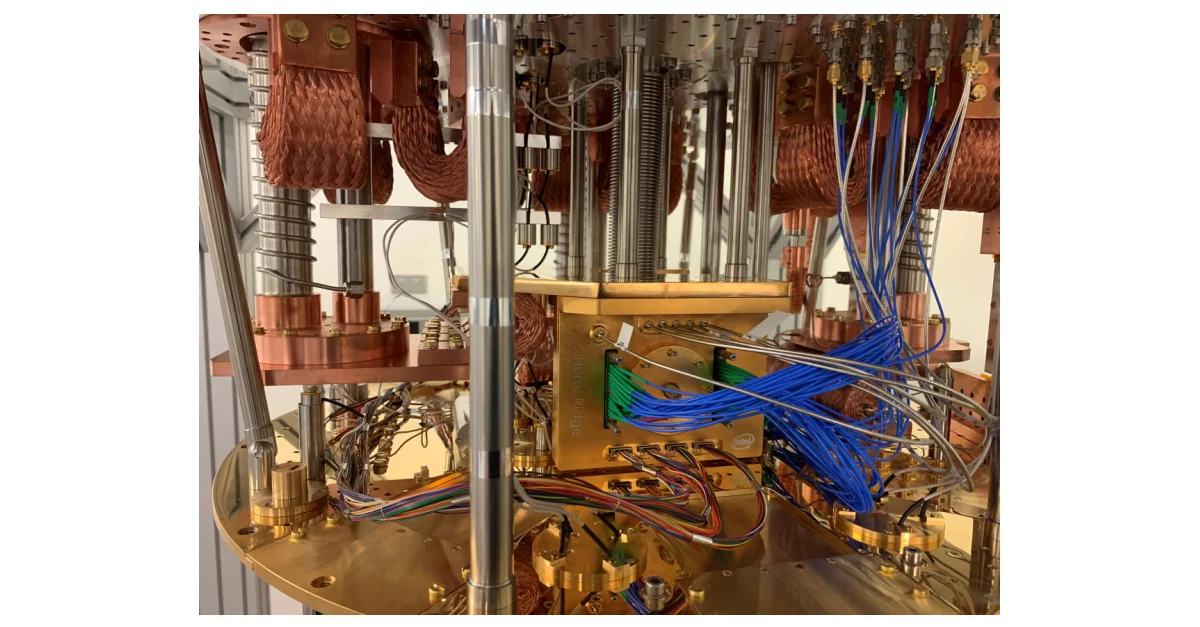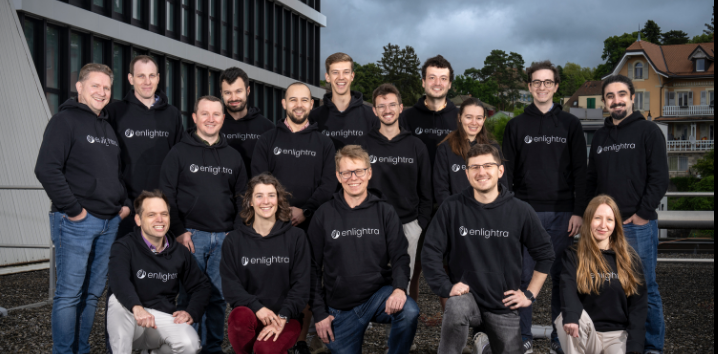Intel’s quantum computing strategy is steeped in years of innovation in a complex scientific environment coupled with an ability to navigate a competitive technological industry. In this article, we will review Intel’s quantum computing advantages – both in regards to its technological advantages, as well as strengths brought about by the company’s unique position and history.
Intel’s Largest Quantum Computing Advantages
The largest quantum computing advantages for Intel might be more cultural than technological. Intel has more than a half-century history of success delivering complex technologies to market on time and in mass scales.
What does history in delivering classical technology have to do with delivering Intel’s quantum computing technology?
Simply put, the huge challenge that Intel faced in classical computing is the same challenge companies are facing in quantum: building a talented workforce, maintaining intricate supply chains and driving innovation for scalability. While many companies may need to build this from the ground-up, Intel has decades of experience.

Because culture and history are central to Intel’s advantages in classical computing, the company can leverage those innate advantages to achieve excellence in quantum computing projects.
Intel’s Most Significant Quantum Computing Projects
Based on Intel’s experience in mass producing computer devices so that they can scale to meet needs from personal to commercial to enterprise, the company’s overall strategy is centered on helping quantum scale. The company’s quantum computing projects address the technological challenges associated with creating a quantum computer that can scale to suit a range of customers and uses.
Address Quantum Complexity
According to Intel, todays’ quantum systems rely on placing a qubit chip inside a dilution refrigerator. Multiple coaxial cables are routed to the chip. The complexity of this set-up impacts costs and that leads to extreme engineering challenges that hinder efforts to make quantum computers that can serve real world uses.
Intel’s quantum computing projects are designed to make the devices simpler and less costly.
Address Quantum Scalability
Because of the complexity and costs associated with current quantum approaches, Intel’s quantum computing engineers doubt that they can scale to a large number of qubits to be practical. The list of challenges include form factor, cost, power consumption and thermal load to the fridge.
By limiting complexity, Intel Quantum Computing engineers believe they can design systems that are scalable.
“Today’s hundred qubits — or even a thousand qubits — will not get us there, however,” she said. “We will need a full-stack, commercial scale quantum computing system of millions of qubits to attain quantum practicality for this type of ambitious problem-solving.” — Anne Matsuura, director of Quantum & Molecular Technologies, Intel Labs .
Make Mass Producible Quantum Technology
To become scalable, Intel plans to create quantum computing devices that can be mass produced. The company has already made significant strides here.
The Intel Labs and partners recently demonstrated the industry’s highest reported yield and uniformity to date of silicon spin qubit devices developed at Intel’s transistor research and development facility. According to the company, the yield and uniformity advance represents a major milestone for scaling and working towards fabricating quantum chips on Intel’s transistor manufacturing processes.
So, addressing complexity, Intel can make quantum computing more scalable. By addressing scalability, Intel can make devices that better suit mass manufacturing processes.
With this overall strategy to quantum computing projects, lets take a look at some of Intel’s actual quantum product lines.
Intel’s Quantum Hardware
Intel QC Chips
Intel is already on its second-generation cryogenic control chip, Horse Ridge II.
Building on the success of its initial control chip for the quantum industry, Horse Ridge, which was released in 2019, the second generation chip, is designed as a step to overcome quantum’s biggest challenge to quantum advantage, scalability. The company said that Horse Ridge II offers enhanced capabilities and deep integration for quantum system control. It can manipulate and read qubit states, as well as control the potential of gates to entangle multiple qubits, according to Intel’s quantum team.
Horse Ridge II demonstrates Intel quantum computing leadership, particularly in the field of quantum cryogenic controls, according to Jim Clarke, Intel director of Quantum Hardware, Components Research Group, Intel.
“Horse Ridge II further streamlines quantum circuit controls, and we expect this progress to deliver increased fidelity and decreased power output, bringing us one step closer toward the development of a ‘traffic-free’ integrated quantum circuit.” — Jim Clarke
“We believe that increasing the number of qubits without addressing the resulting wiring complexities is akin to owning a sports car, but constantly being stuck in traffic,” said Clarke. “Horse Ridge II further streamlines quantum circuit controls, and we expect this progress to deliver increased fidelity and decreased power output, bringing us one step closer toward the development of a ‘traffic-free’ integrated quantum circuit.”
Recalling Intel’s mission to “simplify to scale,” the Horse Ride II is a dramatic step toward simplifying the need for multiple racks of equipment and the tangled nest of wires of other approaches.
Intel engineers add that the integrated system-on-chip – SoC – “simplifies system design and uses sophisticated signal processing techniques to accelerate setup time, improve qubit performance and enable the engineering team to efficiently scale the quantum system to larger qubit counts.”
Horse Ridge II also introduces additional control features that allow for further integration of external electronic controls into the SoC operating inside the cryogenic refrigerator.
Intel QC Devices
Quantum computing requires a range of peripheral pieces to serve as the backbone for what will become a thriving quantum industry. Intel and its partners have made headway on creating devices for the quantum technology field.
Intel realized a real need for data collection and data access in quantum computing. Quantum processors must be tested for months to improve designs. Intel knew there needed to be a quantum testing tool to collect more data about quantum chips. Recognizing that need, the company announced that it, along with its partners Bluefors and Afore, built the first cryoprober, which was developed specifically for the development of quantum computing solutions.
“Building on our expertise in transistor process technology, we saw the need to create a 300mm high-volume fabrication and test line for semiconductor spin qubits. We are focused on the manufacturability and scaling issues for quantum, and a fast feedback through the cryoprober allows Intel to accelerate our scientific learning,” said Dr. Jim Clarke, director of Quantum Hardware, Intel.
Intel Quantum Materials
Intel researchers are among the world’s best in nearly every segment of the company’s operations and product lines. They specifically excel at materials research, a background that is placing them in the forefront of quantum materials.
The company is exploring quantum materials research to prepare the path from the CMOS – complementary metal-oxide semiconductor – era. CMOS is the semiconductor technology used in most of today’s integrated circuits. Experts believe that the CMOS design has hit fundamental limits to miniaturization and scalability.
“We are looking for revolutionary, not evolutionary, approaches for computing in the beyond-CMOS era. MESO is built around low-voltage interconnects and low-voltage magneto-electrics. It brings together quantum materials innovation with computing. We are excited about the progress we have made and are looking forward to future demonstrations of reducing the switching voltage even further toward its potential.”
Magnoelectric Spin-Orbit Logic – or MESO 00 could be a scalable, energy-efficient alternative. Intel researchers are actively exploring the use of this approach that could boost energy efficiency by 10 to 30 times, Intel told the Silicon Angle.
Intel’s researchers wrote in a paper in the journal Nature: “We are looking for revolutionary, not evolutionary, approaches for computing in the beyond-CMOS era. MESO is built around low-voltage interconnects and low-voltage magneto-electrics. It brings together quantum materials innovation with computing. We are excited about the progress we have made and are looking forward to future demonstrations of reducing the switching voltage even further toward its potential.”
Intel Quantum Simulator
The Intel Quantum Simulator is another important piece of Intel’s quantum strategy. It is a cloud-ready, high performance simulator of quantum circuits that gives the company a test bed to explore quantum computation through classical simulation. The company researchers report in a study on the pre-print server ArXiv that it will play an essential role in the progress of quantum information science, both for numerical studies of quantum algorithms and for modeling noise and errors.
Formerly known as qHiPSTER, IQS simulates quantum circuits that are optimized to take advantage of multi-core and multi-nodes architectures, according to the company.
The qubit state is completely represented, but gates and other quantum operations are avoided. IQS relies on message-passing-interface – MPI – protocols to manage communication between distributed resources that are used to store and manipulate the quantum state.
Intel Quantum Software Development Kit
A final piece of Intel Quantum Strategy rests in the The Intel Quantum SDK.
This is a recently launched full-stack Software Development Kit optimized for executing hybrid algorithms.
The SDK includes an intuitive user interface based on C++, a compiler toolchain based on the industry standard LLVM, and a runtime environment adapted for quantum with a high-performance Intel® Quantum Simulator qubit target backend.
See also: Atos’ Quantum Computing Technology Review 2023
Where is Intel Heading With Quantum Computing?
While many companies currently competing in the quantum space are preparing for a sweeping new quantum era, Intel appears to be positioning itself in a more subtle arrangement of – and even cooperation – between classical and quantum computing schemes, showcasing Intel’s quantum computing as an integral part of their hybrid approach to future technologies.
Intel’s vision appears to be a hybrid one. In this case, we likely wouldn’t see Intel abandoning its leadership in classical computing for a pure quantum strategy. We likely won’t see it abandon it’s quantum advances. Most likely, it will take the best of both systems. In this classical-quantum hybrid world, we would see Intel technology in classical, high-performance and quantum computing realms.
We could easily see a data center that employs all of these technologies, each assigned to handle computational tasks that they are best suited. Speaking of best suited, Intel’s history and pedigree place it as one of the companies best suited to lead this hybrid-quantum future.
For more market insights, check out our latest quantum computing news here.

















